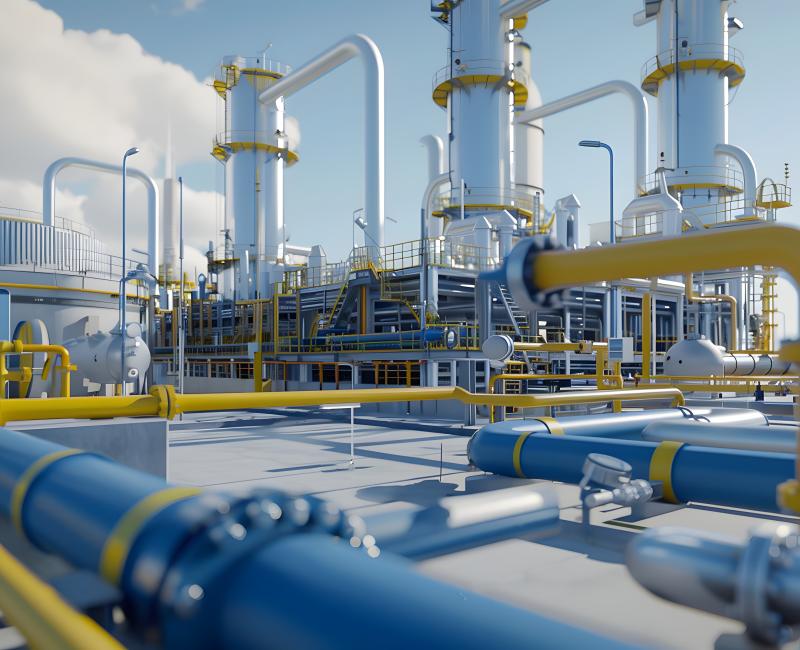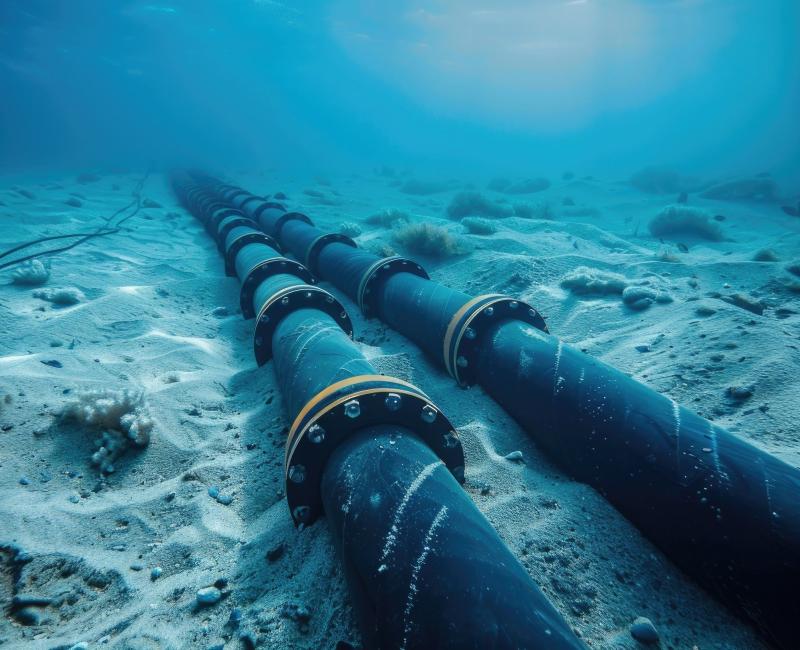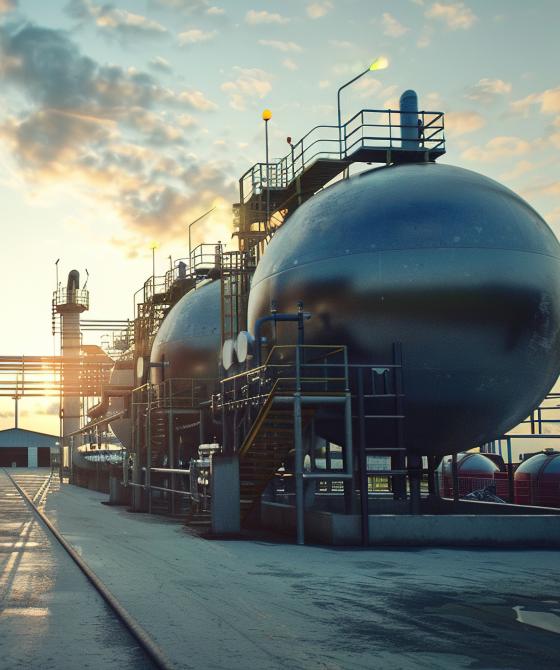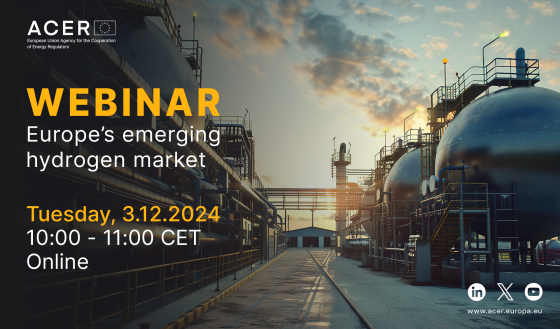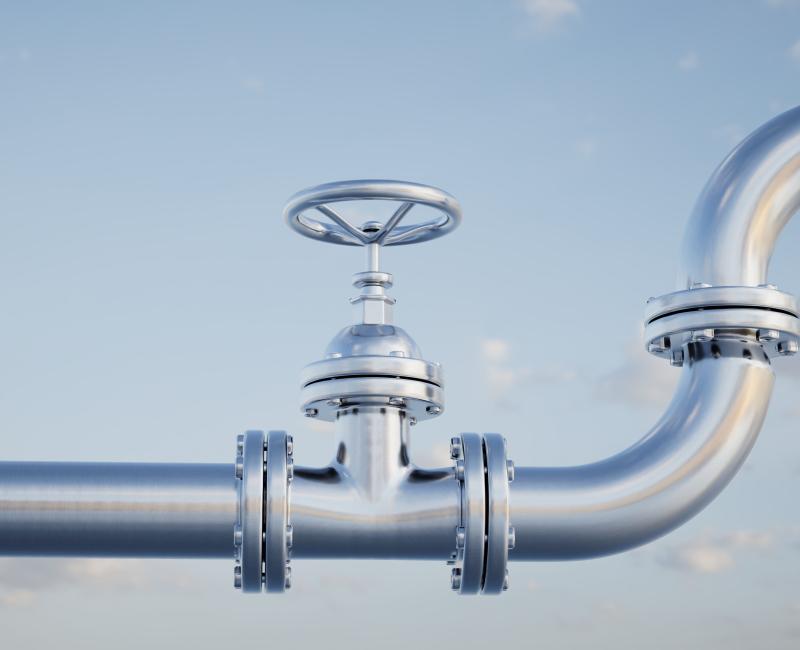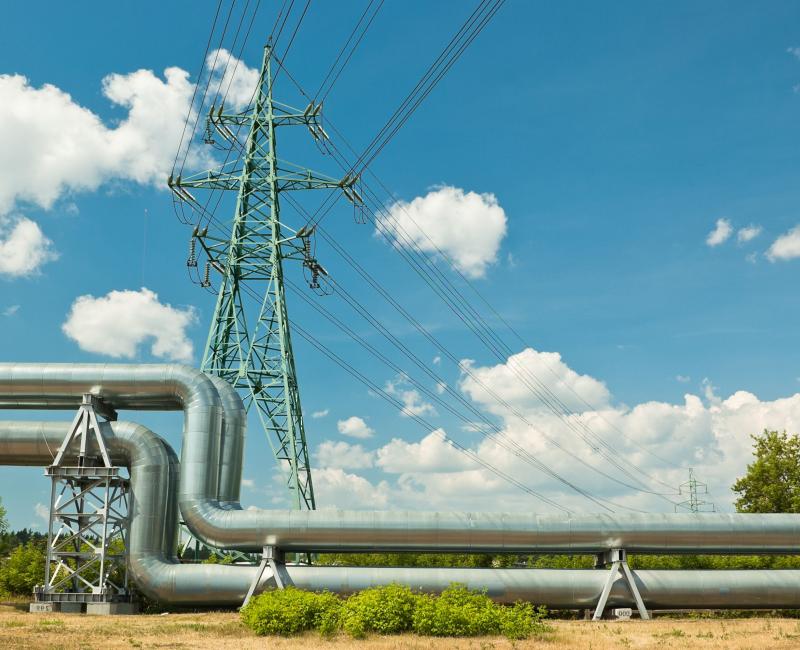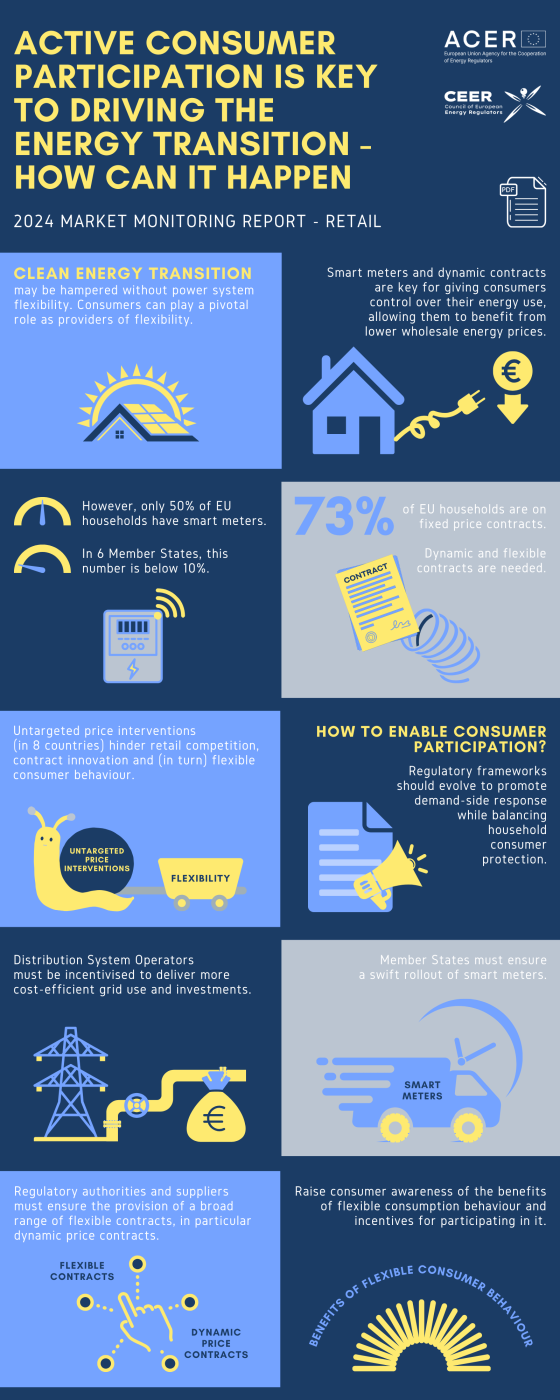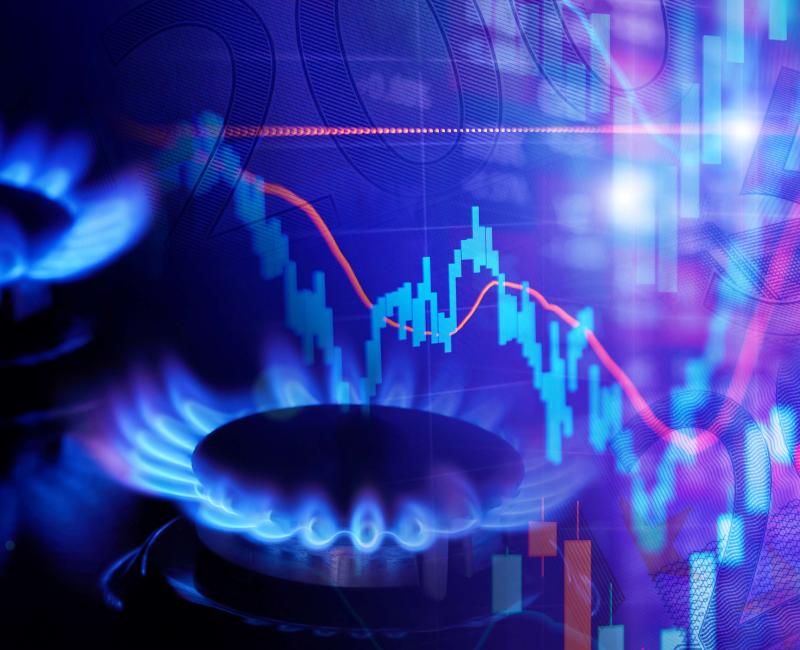ACER’s new Country Sheets identify opportunities and threats in retail markets across the EU

ACER’s new Country Sheets identify opportunities and threats in retail markets across the EU
What is it about?
For the first time, ACER publishes its Country Sheets to present key metrics on retail electricity markets across EU Member States and Norway. These short 1-pagers provide insights into:
- key market facts;
- consumer trends, including contract uptake and bill breakdown;
- national progress towards 2030’s decarbonisation targets, showing status of electric vehicles’ (EVs') uptake, EV’s charging stations, the installation of heat pumps and the share of final renewable energy consumption;
- a high-level SWOT analysis to show strengths, weaknesses, opportunities and threats of each market.
What are the key findings?
ACER finds that demand-side flexibility remains limited: the majority of consumers in most countries are on fixed-price contracts, hindering their active participation in electricity markets.
This is despite in many cases, the access to smart metering should enable the provision and uptake of more flexible contracts for both household and non-household consumers.
ACER’s Country Sheets complement the annual Retail Market Monitoring Report and accompanying retail (electricity and gas) data dashboard.
